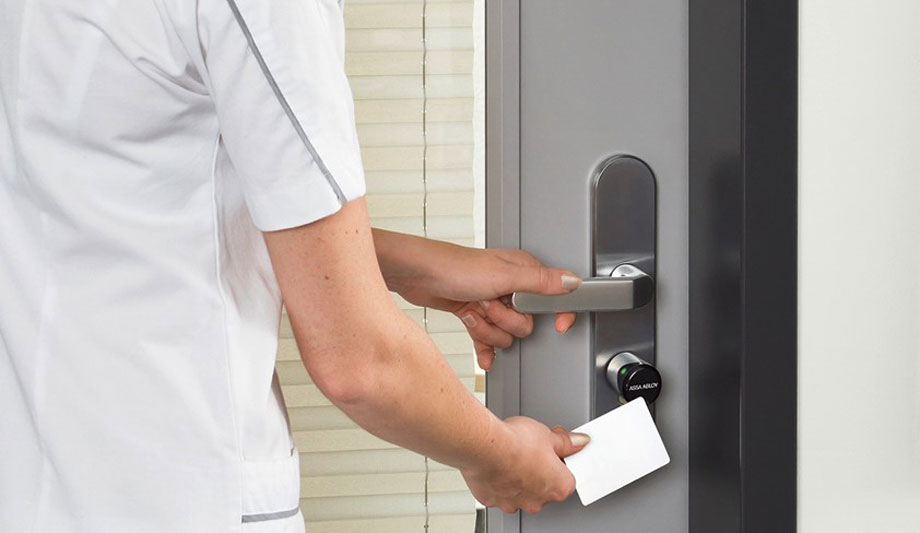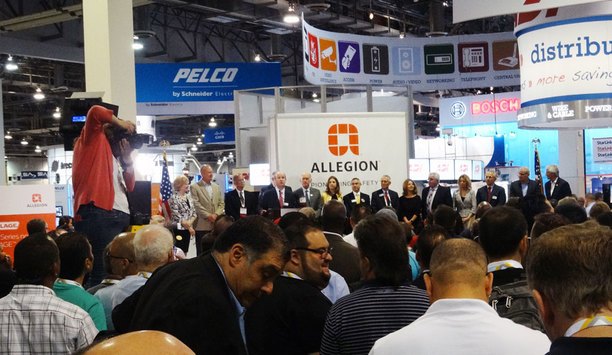End users are looking to expand access control beyond its traditional role securing perimeter doors. Innovations such as wireless locks, wi-fi, power-over Ethernet (PoE) and panel-less IP architectures are yielding more flexible solutions for a larger range of locking needs both inside and at the perimeter of an enterprise. Donna Chapman, an ASSA ABLOY Integrated Solutions Specialist, notes that new technologies are increasing how many openings are secured in a building from the current 5 to 15 percent to as many as 25 to 40 percent of openings.
Access Control For Data Centers
Openings don’t just mean doors – it could mean a lock for a prescription drug cabinet in a hospital or physical access to a server in a data center.
I caught up with ASSA ABLOY at AMAG’s Security Engineering Symposium (SES) 2016. AMAG and ASSA ABLOY are technology partners – AMAG’s Symmetry access control system is integrated with ASSA ABLOY’S IP-enabled locks. Our discussion covered changing locking trends – and new opportunities for consultants, integrators and end users.
“It used to be enough to secure the perimeter of a data center, for example” says Jim Crowley, ASSA ABLOY’s Electronic Access Control (EAC) OEM Business Development Manager. “But now customers want to be able to secure the actual rack the server blades are in. In a co-located data center, you have data from various companies stored together at one facility, and you want to control who’s getting physical access to the data.”
Regulations are driving some needs for new locking solutions. In the data centerscenario, protection of medical information required by HIPAA [the U.S. Health Insurance Portability and Accountability Act of 1996] is driving the need to secure various openings – there are hefty fines for any violations of HIPAA rules.
"It used to be enough to secure the perimeter of a data center, but in a co-located data center, you have data from various companies stored together at one facility, and you want to control who’s getting physical access to the data" |
“If you look at the regulatory environment we’re in today, NERC (for the electric utility market) and HIPAA and those types of regulations are requiring that openings have auditability,” says Crowley.
“You need to know which people have access to openings both proactively and on a forensic basis. That’s driving access control further into the enterprise and onto openings that you historically didn’t see.” [NERC is the North American Electric Reliability Corp.]
Wired Vs Wireless Locks
“There’s no one-size-fits-all solution,” adds Chapman. “You want to be able to offer a locking solution based on needs and budget, and you have a lot of options.” While every lock cannot be wired, it’s also true that many applications don’t lend themselves to wireless solutions. A strategic mixture is the best approach.
“We are not trying to displace all hard-wired doors with wireless,” says Crowley. “There will always be a need for wired and wireless – they’re complementary, and not mutually exclusive.” He also notes that wireless locks use AES 128-bit encryption to ensure security. “We are always looking to improve the security of that wireless transmission, but some people have it in their head that wireless is not secure, which isn’t the case.” However, because concerns persist, ASSA ABLOY just came out with Wiegand wired versions of its cabinet locks and server cabinet locks. Some data centers just don’t want wireless locks in their facility.
Adopting Cloud Security Solutions
Another development is cloud applications for the light commercial market, which offer an attractive price point that combines security and convenience. “When folks talk to me about being concerned about security in the cloud, I ask them: How do you do your banking? If you’re using your bank’s Web-based services, your entire financial life is in the cloud.”
When developing its variety of locking solutions, ASSA ABLOY is always listening to the voice of the customer, says Chapman. “We want our solutions to be innovative and customer-centric, with everyone having a good user experience – including our OEM partners, channel partners, integrators and end users.” The company has teams of people who constantly call on integrators, security consultants and architects, as well as owners and users. “We are constantly evolving, and we want to take whatever necessary steps to make doing business with ASSA ABLOY easier.”












































